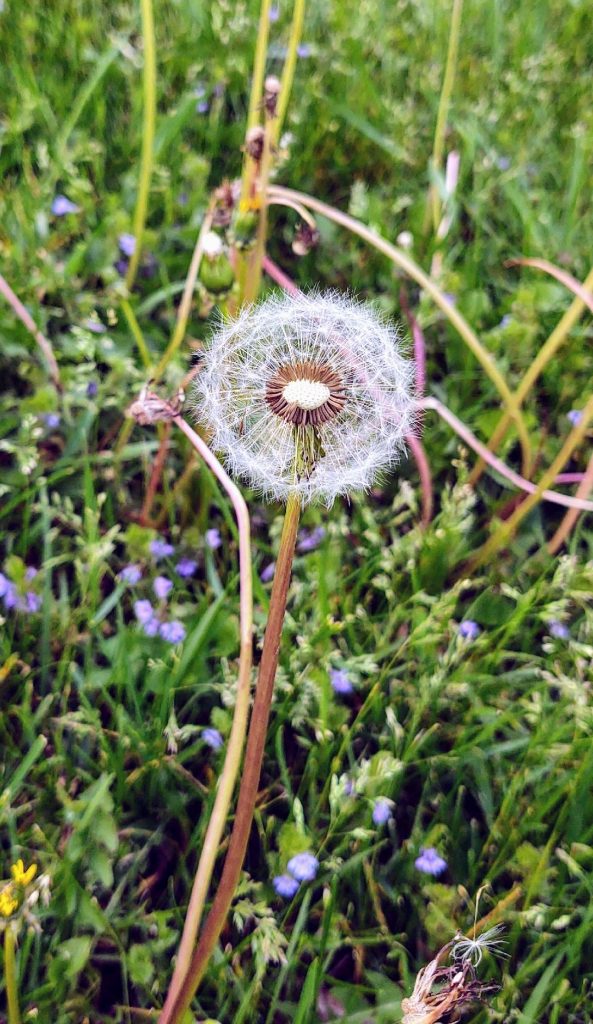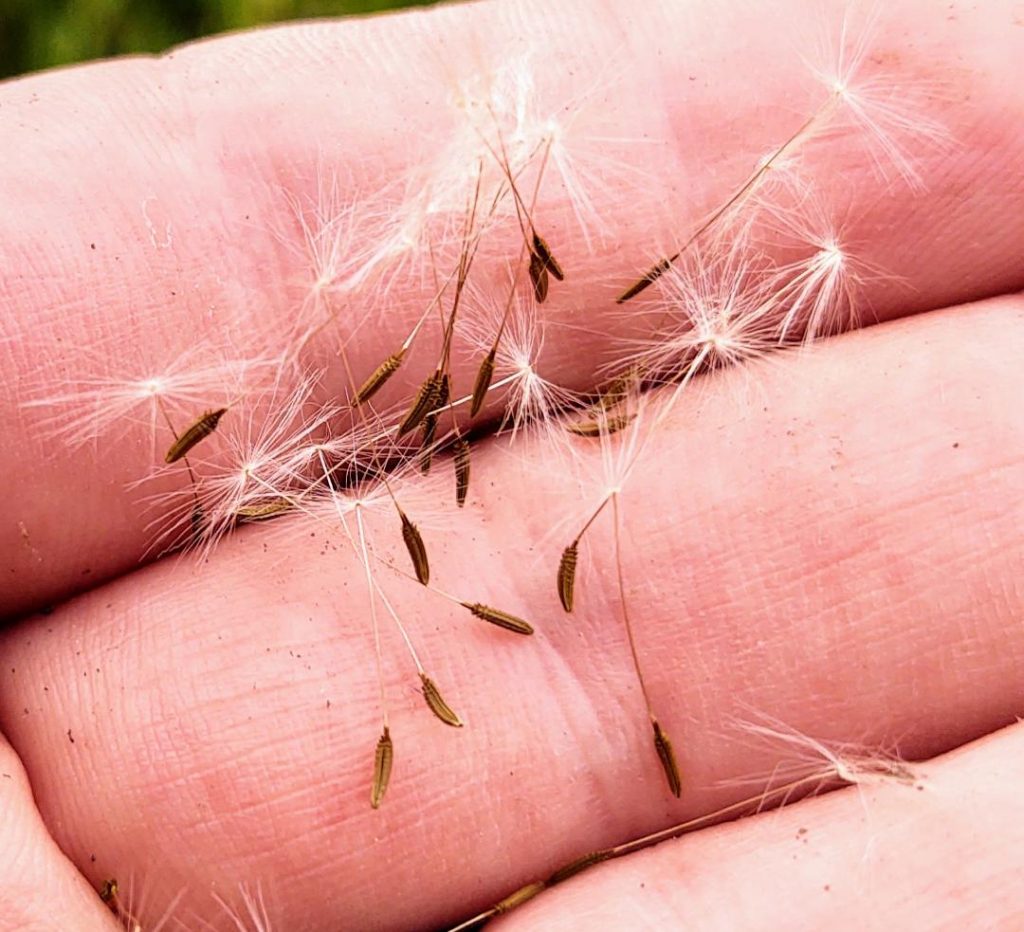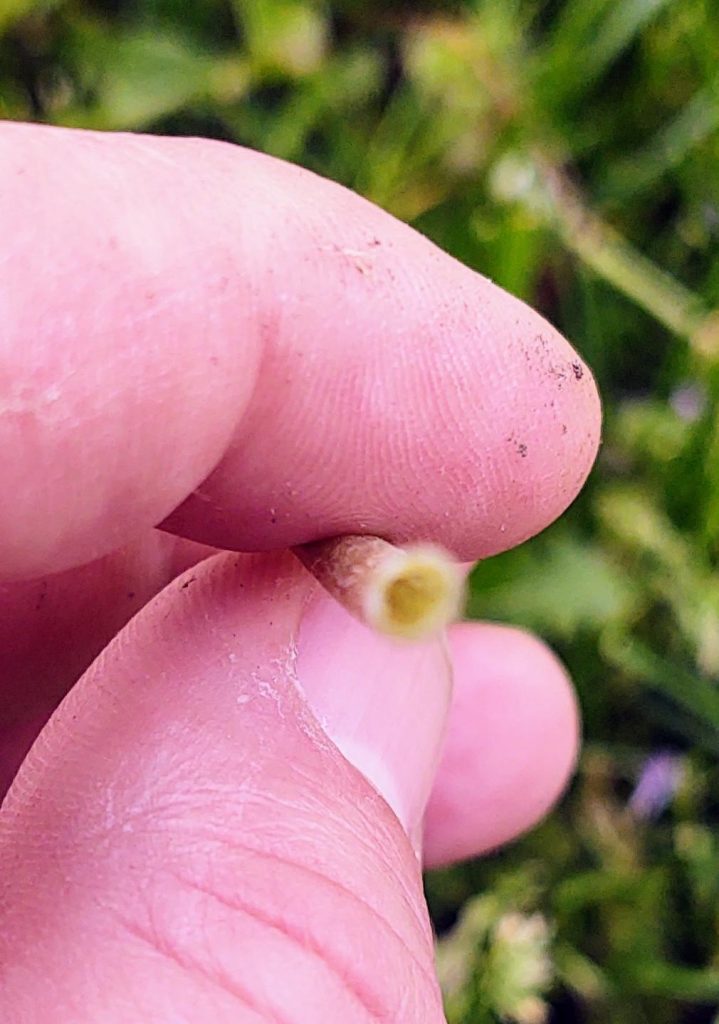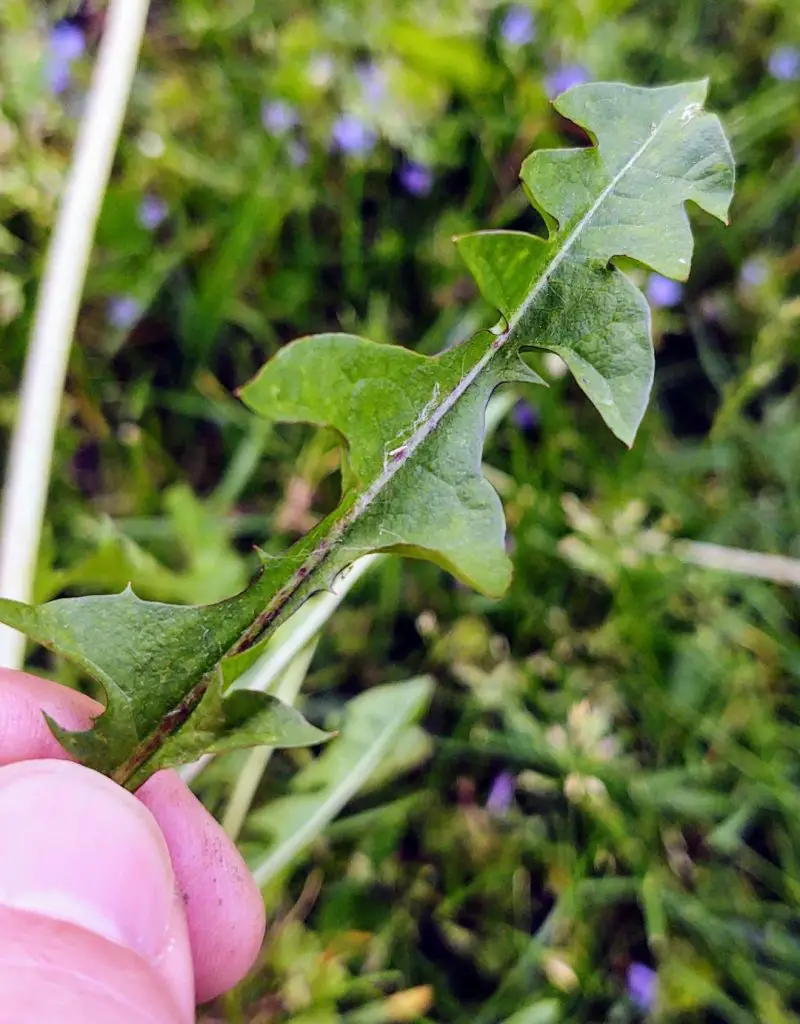As a kid, I thought that anything growing in our yard that was not grass was a weed, including dandelions. While technically that was true my perspective at the time was that weeds were intrinsically bad, which is not true.
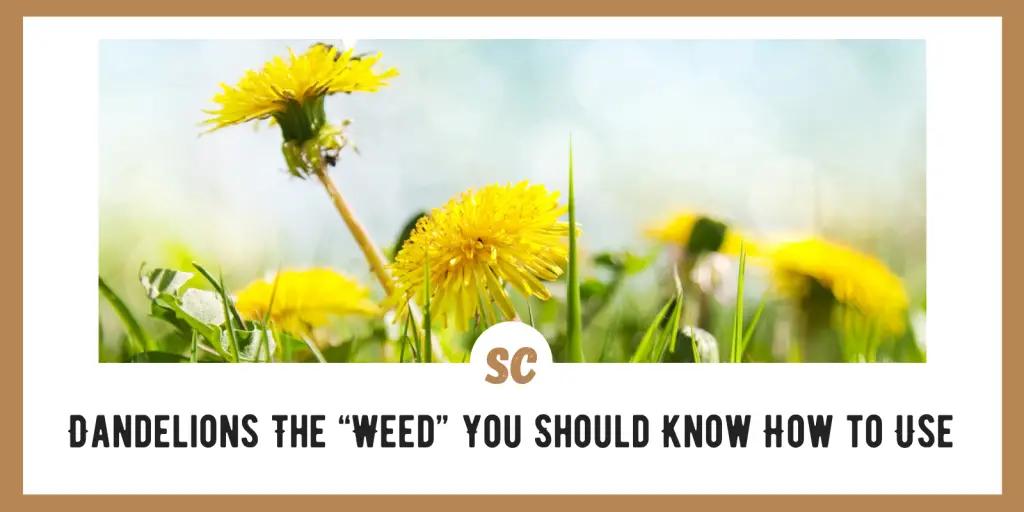
This was the key to my understanding of what a weed is and is not. It’s not that they are bad, although there certainly are plants that are harmful or poisonous to people, it’s that they are simply growing in a place that they are not wanted.
It wasn’t until I got older and started to really learn more about plants that I realized dandelions are not bad, but in fact they are quite good for us.
SKIP AHEAD
Benefits of Dandelions
Upon conducting a little bit of research into dandelions, you will find they are good for all sorts of things, especially promoting a person’s health.
When looking at the dandelion, I think a change of perspective would be good. Instead of seeing them as harmful or undesirable, we should consider them an ally.
Abundant
I realize that dandelions do not grow everywhere but they are one of the most widespread plants on the planet. If you are in a region in which they grow, chances are they everywhere!
This is great news for the everyday forager or for someone who finds themselves in a survival situation because this means the dandelion can usually be found in abundance.
Easy to Identify
I think this one of the most important aspects of the dandelion because proper plant identification is critical to a forager.
Foraging for wild edibles can be tricky because it requires absolute knowledge and proper identification. Otherwise, a person can become ill or worse from eating the wrong plant.
I feel confident in saying that the dandelion is so recognizable that even people who do not spend a lot of time outdoors could identify it.
This becomes important in a survival situation when field guides may not be available, and we must rely only on the information in our heads.
Nutrition
Believe it or not, most parts of the dandelion are completely edible, and they are quite nutritious. According to farmersalmanac.com, the green portion of the dandelion contains vitamins A, C, K, calcium, potassium, iron, and manganese. The roots are also a good source of fiber.
Medicinal Uses
Also, according to farmersalamanc.com, the dandelion has been used for hundreds of years as a remedy for diabetes, kidney stones, and hepatitis.
Something that I recently learned about dandelions, from the same source as above, is that they are considered a good prebiotic. That means they help to increase the good bacteria in our bellies which promotes good digestion and can strengthen the immune system.
Sounds like this little plant we spend so much time trying to eradicate is a little powerhouse of health benefits!
How to Use Dandelions For Survival
Having covered the benefits of dandelions now is time to discuss how to identify, harvest, and use them. I know I said earlier that almost everyone knows what this little guy looks like but not everyone has had the same experiences.
Dandelion Identification
Dandelions are easy to spot in the springtime and summertime by their round, bright yellow flower. If the dandelion reminds you of another flower this may because it is a part of the daisy family.
Once it goes to seed, the yellow flower disappears and is replaced by a spherical fluff of seeds. Upon closer inspection, you will notice that the seed is attached at the bottom of the fluff and the whole piece almost resembles an umbrella.
The white fluff acts almost like a parachute or sail, catching the wind. By hitching a ride on the wind, this fluff helps to carry the seed to a new home where it will begin growing.
The stem of a dandelion is easily identified because it has a shiny, almost transparent green appearance. Breaking the stem open will reveal that the center of the stem is completely hollow. Also, after breaking the stem, it may secrete a milky, white sap.
The basal leaves, growing around the base of the flower, are noticeably different than your typical leaf. They have a jagged, sawtooth appearance, which makes them stand out from surrounding vegetation. The leaf tends to be skinny towards the base and the teeth become progressively larger further away from the base.
Harvesting
Once you have become confident in identifying the dandelion, it is time to harvest it. You really do not need any tools for harvesting a dandelion, but a few simple ones will help.
A knife or cutting shears can be used for harvesting the flowers and leaves while a small trowel or shovel will help in digging the roots up. If you plan on harvesting a lot of dandelions, then a container of some sort will be helpful in transporting them.
Most wild edibles are not all that difficult to harvest. The difficult part is making sure that the area they are being harvested from is safe.
This means you should stay away from areas where the ground has been treated with chemicals, like many front lawns, or where the ground has been contaminated with other hazardous materials, such as industrial areas.
When in doubt, do not harvest from areas you do not know the history of, particularly if there has been a human presence on that land in recent times.
Cleaning
After harvesting the dandelion, it is a good idea to wash all the parts you intend on using. This can be done with plain water or a mixture of water and vinegar which will further help to eliminate bacteria.
As is the case with other vegetables and greens, dry the dandelion parts with a towel and seal them in a container or resealable bag. When they are kept at a cool temperature, in your refrigerator, you can expect them to remain good for at least a couple of days.
Using Them
According to Lisa M Rose, author of Midwest Foraging 115 wild and flavorful edibles from burdock to wild peach, dandelion leaves are tender but can be on the bitter side. While bitter greens may not taste the best, they do aid with digestive functions.
The leaves can be tossed and mixed into a salad with a variety of other greens, stir-fried into dishes, added to soups or stews, or even placed on your favorite sandwich.
The flowers are often used in bread, to make wine, as a dying agent, and in homemade soaps.
As for the roots, Midwest Foraging suggests roasting or boiling them. They can be added with other edible roots and boiled to create a mash.
The roasting process brings out a sweetness in the roots and drying the roots allows them to be ground up and used as a brew for coffee or tea.
Dandelion Recipes
If you jump on the internet, you can find all sorts of dandelion recipes that include making wine, jams, jellies, salads, soups, breads, teas, and other dishes.
I didn’t list all the available recipes because most of them are not exactly the same due to people’s preferences in the ingredients. However, I did want to list at least one recipe and decided on dandelion coffee because coffee is such a popular drink. Also, its preparation is about as simple as it comes.
Making Dandelion Coffee
I heard this recipe long ago and I am not exactly sure where I heard it from, however, it seems to line up with most dandelion coffee recipes that I looked up.
Step 1
The first thing you are going to want to do is to dig up a good number of dandelion roots. You do not need a whole lot for one cup of coffee, but since you are going through the process you might as well make a batch of it.
The roots (and the leaves) are best harvested in the early spring before the dandelion flowers, otherwise, the roots tend to become more bitter.
Step 2
Place the roots in a strainer and give them a good washing to remove any dirt, insects, and other debris.
Step 3
Use a knife to cut the roots up into small pieces roughly the size of cubed cheese. If you like a bolder, burnt taste to your coffee go ahead and leave the little, stringy roots in the mix as these will dry out much faster than the larger pieces. If you like a milder taste, then cut the stringy roots off and set them to the side.
Now when it comes to roasting, I have heard of two different ways to do it.
Step 4
The first is to roast the roots, much like you would coffee beans, in a skillet. The roots are placed in a hot skillet and constantly stirred to avoid burning. Once the outside is nice and browned, they should be good to go.
If you do not want to spend the time hovering over a skillet the roots can be roasted in an oven. Place the roots on a cookie sheet or pan and roast them for 30-45 minutes at 350-400 degrees.
You may want to turn the roots over halfway through the cooking time and when the outside is completely browned, they should be good to go.
Step 5
From this point, it seems that most people prepare dandelion coffee much like tea is prepared. The roots are placed into a pot of boiling water and allowed to steep for around ten minutes.
Step 6
For a more flavorful tasting coffee, you can add in other ingredients that you like such as cinnamon, sugar, honey, etc.
After the roots have steeped, pour the mixture through a filter or a fine mesh screen to remove the solids from the liquid.
Quick Facts About Dandelions
- Did you know that the benefits of dandelions are so popular among some people that they remove grass from their yards to make room for dandelions to grow?
- The dandelion can represent three different celestial bodies. The yellow flower represents the sun, the fluff ball represents the moon, and when the seeds are hitching a ride on the wind they represent the stars.
- The dandelion is a natural diuretic, so you may not want to consume it in large amounts, especially until you know how it affects you.
- If you are sensitive to latex, you may want to wear gloves or stay away from the stems as they contain a fair amount of it.
- Dandelion means, “lion’s tooth.” This is in reference to the jagged, tooth-like appearance of the leaves.
FAQs
Yes, if the yard has not been treated with any chemicals and the soil is not hazardous in any other way, dandelions can be picked from your yard. It’s no different than picking vegetables from a home garden.
The stem on a dandelion can grow to over one foot tall and
they can live ten years, sometimes longer.
They are native to Europe and Asia but have spread far and wide and can now be found on every continent except for Antarctica.
According to the American Kennel Club, dandelions are considered safe for your dog to eat. However, if you notice any adverse side effects do not allow the dog to continue consuming them.
Wrap Up
I think the dandelion has gotten a bad rap in our modern society as an invasive, ugly weed that should be removed at all costs. I get it, a lawn is supposed to be a finely manicured piece of land, thick with grass and nothing else.
However, it could be something else. It could be a place filled with naturally growing plants and flowers that are not only beautiful but could provide a source of food and medicine right outside your front door.
Thanks for reading and remember to forage safely.
Do you have any questions, or experience foraging for dandelions? If so, sound off in the comment section below and let us know about it!



